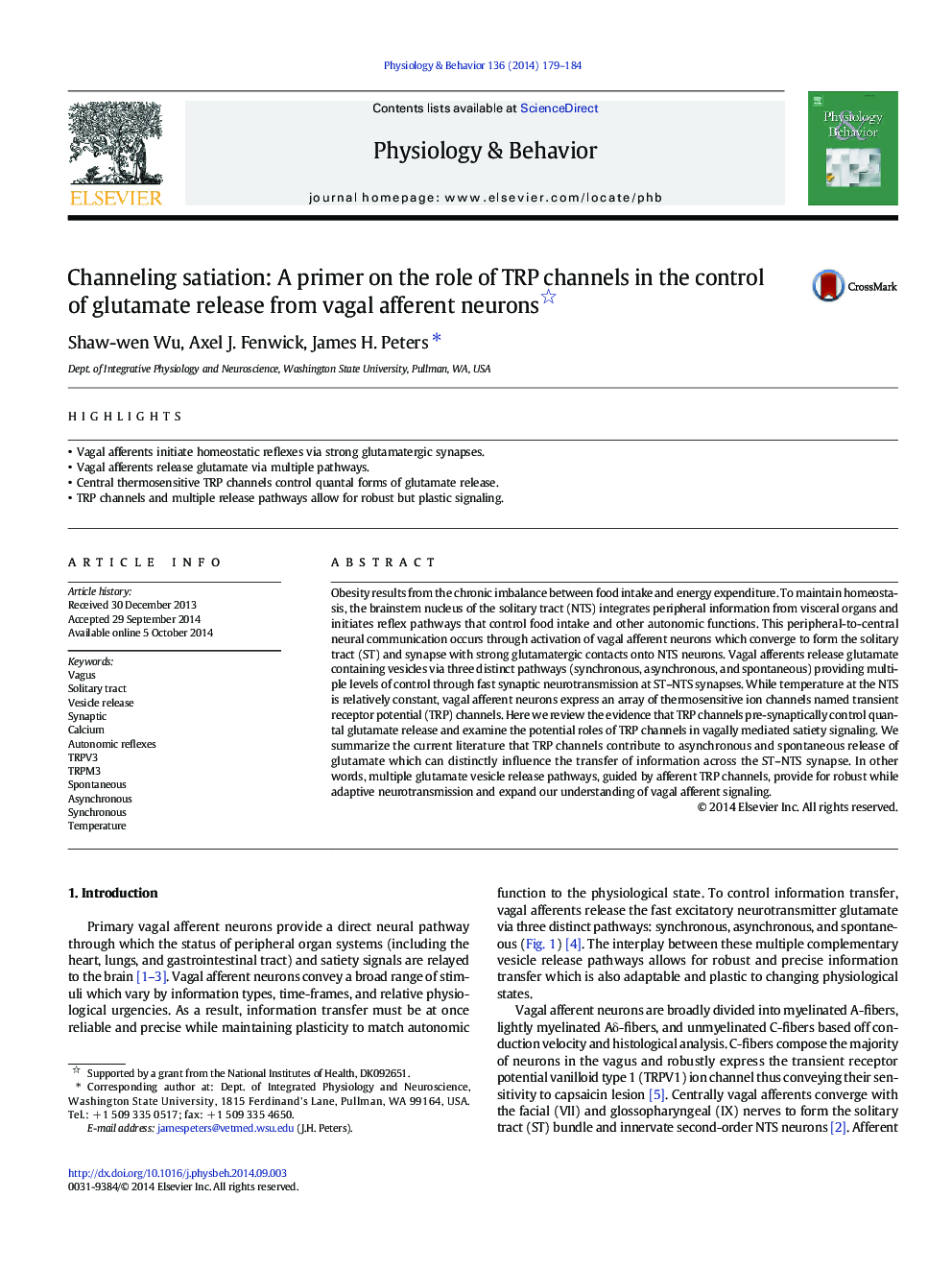| کد مقاله | کد نشریه | سال انتشار | مقاله انگلیسی | نسخه تمام متن |
|---|---|---|---|---|
| 2844153 | 1571181 | 2014 | 6 صفحه PDF | دانلود رایگان |

• Vagal afferents initiate homeostatic reflexes via strong glutamatergic synapses.
• Vagal afferents release glutamate via multiple pathways.
• Central thermosensitive TRP channels control quantal forms of glutamate release.
• TRP channels and multiple release pathways allow for robust but plastic signaling.
Obesity results from the chronic imbalance between food intake and energy expenditure. To maintain homeostasis, the brainstem nucleus of the solitary tract (NTS) integrates peripheral information from visceral organs and initiates reflex pathways that control food intake and other autonomic functions. This peripheral-to-central neural communication occurs through activation of vagal afferent neurons which converge to form the solitary tract (ST) and synapse with strong glutamatergic contacts onto NTS neurons. Vagal afferents release glutamate containing vesicles via three distinct pathways (synchronous, asynchronous, and spontaneous) providing multiple levels of control through fast synaptic neurotransmission at ST–NTS synapses. While temperature at the NTS is relatively constant, vagal afferent neurons express an array of thermosensitive ion channels named transient receptor potential (TRP) channels. Here we review the evidence that TRP channels pre-synaptically control quantal glutamate release and examine the potential roles of TRP channels in vagally mediated satiety signaling. We summarize the current literature that TRP channels contribute to asynchronous and spontaneous release of glutamate which can distinctly influence the transfer of information across the ST–NTS synapse. In other words, multiple glutamate vesicle release pathways, guided by afferent TRP channels, provide for robust while adaptive neurotransmission and expand our understanding of vagal afferent signaling.
Journal: Physiology & Behavior - Volume 136, September 2014, Pages 179–184